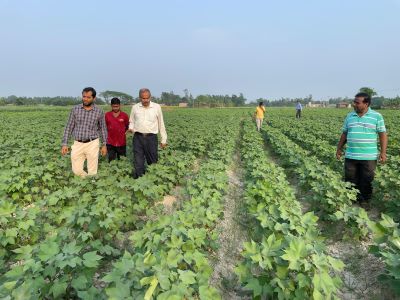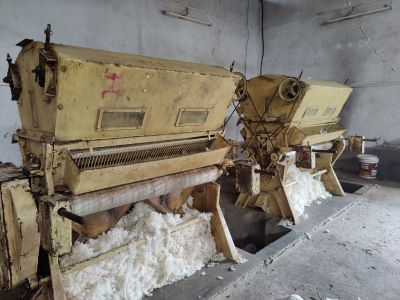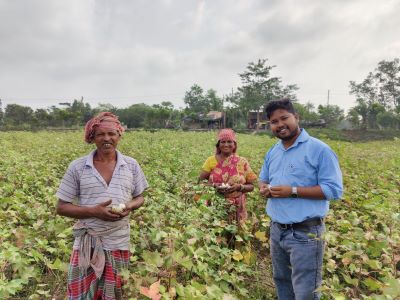In the saline-affected rice-fallow lands of the Sundarbans, farming was long constrained by soil salinity, water scarcity, and limited crop options. Under the guidance of Ramkrishna Ashram Krishi Vigyan Kendra (RAKVK), Nimpith, operating under ICAR-ATARI, Kolkata, farmers embraced an unconventional solution: cotton cultivation. This initiative transformed adversity into opportunity, offering farmers a resilient, high-value, and non-perishable crop that secured both income and confidence.

Technological Breakthroughs
Early attempts under the Technology Mission on Cotton (TMC) faced challenges with long-duration varieties coinciding with monsoon rains, causing yield losses. Collaborating with ICAR-CICR Nagpur, UAS Dharwad, and private seed companies, RAKVK introduced short-duration varieties such as Surabhi (135-day) and Suraksha, enabling timely harvests, yield stability, and superior fiber quality. Continuous training, field demonstrations, and awareness campaigns empowered farmers to adopt cotton widely across rice-fallow lands.
Cotton’s salinity tolerance reclaimed degraded soils, reducing salinity below 1 dS/m and improving fertility for subsequent crops, including pulses. Its biomass enhanced soil carbon content, while low-input, rainfed cultivation minimized greenhouse gas emissions, contributing to environmental sustainability.

Cotton cultivation generated employment during otherwise idle summer months, actively involving women and youth in harvesting. Crop residues provided fuelwood, reducing household drudgery. The initiative curtailed seasonal migration, strengthened family livelihoods, and restored dignity through stable income opportunities.
A cotton godown and ginning unit established at RAKVK, linked with the Cotton Corporation of India (CCI), enabled farmers to sell directly at Minimum Support Price (MSP), eliminating middlemen and ensuring reliable returns. On average, farmers invest ₹50,765 per hectare and harvest 17.5 quintals per hectare, achieving a net profit of ₹80,485 per hectare—significantly higher than traditional crops. Sundarbans cotton, now recognized for its superior fiber length, strength, and texture, competes successfully in domestic and global markets.

Cotton cultivation has redefined the agricultural identity of the Sundarbans, transforming saline fallows into productive ecosystems, enhancing farm incomes, and promoting climate-resilient agriculture. It has become a model for sustainable, inclusive, and profitable farming in coastal and ecologically vulnerable regions, demonstrating the power of scientific foresight, local adaptation, and farmer determination.
The success of cotton in the Sundarbans highlights a story of resilience, innovation, and empowerment—showing how a strategic crop intervention can turn marginal lands into a source of prosperity, employment, and environmental sustainability.
(Source: ICAR-Agricultural Technology Application Research Institute, Kolkata)








Like on Facebook
Subscribe on Youtube
Follow on X X
Like on instagram